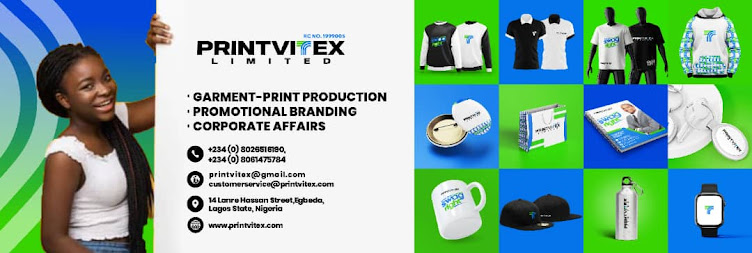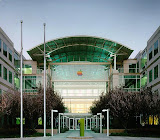It is natural to have high hopes and expectations for the success of our business ventures. We often envision family and friends rallying behind us, becoming loyal patrons of our business. However, relying solely on the support of our loved ones to sustain our operations can be a precarious strategy. To truly thrive, entrepreneurs must invest in developing strong sales and marketing channels, utilizing promotional branding and products to engage a broader audience. In this thought-provoking blog post, we explore the importance of establishing effective sales and marketing strategies that go beyond personal networks.
- The Pitfall of Expecting Support: While it is tempting to believe that family and friends will be our most devoted customers, it is important to recognize the limitations of this assumption. Personal relationships should not be taken for granted or burdened with the expectation of unwavering support for our businesses. By overrelying on these connections, we risk jeopardizing both our personal relationships and our business ventures.
- Expanding Your Reach: To truly succeed, entrepreneurs must tap into larger markets and reach beyond their immediate circles. Building a customer base comprised of diverse individuals who genuinely value their products or services is a key factor in long-term success. By investing time, effort, and resources into sales and marketing strategies, entrepreneurs can effectively broaden their reach and target a wider audience.
- The Power of Promotional Branding: Promotional branding serves as a potent tool to create brand awareness and capture the attention of potential customers. By investing in high-quality promotional materials, such as custom merchandise, entrepreneurs can increase their brand visibility and leave a lasting impression. These promotional products act as ambassadors for your business, extending your reach beyond personal networks and creating new touchpoints for potential customers.
- Building Effective Sales Channels: Establishing effective sales channels is crucial for sustained business growth. From e-commerce platforms and social media to partnerships with local retailers, entrepreneurs have a myriad of options to explore. Diversifying sales channels allows for wider exposure and increases the chances of reaching customers who may not have otherwise come across your business. Remember, effective sales channels require a comprehensive understanding of your target audience and thoughtful implementation of marketing strategies.
- Leveraging Digital Marketing: In today's digital age, harnessing the power of online marketing is non-negotiable. A well-rounded digital marketing strategy encompassing social media, content marketing, search engine optimization (SEO), and email marketing can significantly boost your business's visibility and customer acquisition. By consistently engaging with your target audience through various online channels, you can create a strong online presence and foster trust in your brand.
- The Importance of Customer Relationships: As you expand your customer base and strengthen your sales and marketing channels, nurturing strong customer relationships becomes paramount. Going beyond one-time transactions and focusing on building lasting connections with your customers fosters loyalty, word-of-mouth referrals, and repeat business. Satisfied customers can become your brand advocates, further amplifying your marketing efforts.
Proven Strategies to Capture a Wider Audience, Drive Sales, and Build Lasting Customer Relationships through Promotional Items:
- Tailor Promotional Items to Your Target Audience: Understand your target audience's demographics, preferences, and needs. Customizing promotional items to match their interests increases the likelihood of capturing their attention and building a connection.
- Choose High-Quality and Useful Items:Invest in promotional items that are practical, functional, and of high quality. Items that recipients can use in their daily lives, such as custom notebooks, reusable water bottles, or smartphone accessories, are more likely to create a lasting impression.
- Showcase Your Brand Identity:Ensure your promotional items reflect your brand's personality and values. By selecting items that align with your brand identity, you create a cohesive and memorable brand experience for your audience, attracting like-minded customers.
- Get Creative with Branding and Design:Make your promotional items stand out by incorporating creative branding and design elements. Use unique color schemes, eye-catching logos, and thoughtful artwork that reflect your brand's story. Consistency across all promotional materials reinforces brand recognition.
- Create Limited Edition or Exclusive Items: Generate excitement and urgency by offering limited edition or exclusive promotional items. This strategy encourages engagement, stimulates sales, and fosters a sense of loyalty among your customer base.
- Leverage Social Media and Influencers: Extend the impact of your promotional items by incorporating social media and influencer marketing. Encourage customers to share photos or testimonials featuring your items and tag your brand. Collaborate with influencers relevant to your niche to tap into their loyal followers.
- Use Promotional Items as Incentives and Rewards:Motivate customer engagement and foster loyalty by using promotional items as incentives and rewards. Offer them as free gifts with purchases, contest prizes, or exclusive rewards for referrals or repeat customers. This strategy creates positive experiences and emotional connections.
- Measure and Track Results: Implement systems to measure and track the effectiveness of your promotional item campaigns. Monitor key metrics such as brand awareness, customer acquisition, repeat purchases, and social media engagement. Analyzing data helps you make informed decisions and optimize future campaigns.
- Engage in Cause Marketing: Align your promotional items with a cause or social responsibility initiative that resonates with your target audience. This approach showcases your brand's commitment to making a positive impact and can attract socially conscious customers.
- Personalize and Customize: Consider personalizing promotional items with individual names or unique messages. This customization adds a personal touch, making customers feel valued and fostering a deeper connection with your brand.
- Leverage Events and Trade Shows: Participate in events and trade shows relevant to your industry to distribute promotional items and engage with a wider audience. These settings provide opportunities to showcase your products or services, gather leads, and create memorable experiences.
- Encourage Referrals: Use promotional items as incentives for customers to refer others to your business. Offering a referral program with rewards in the form of promotional items not only drives sales but also expands your customer base through word-of-mouth marketing.
Bottomline:
While it is natural to hope for support from family and friends, entrepreneurs must be realistic and proactive in building sustainable businesses. Relying solely on personal networks is not a viable long-term strategy. Instead, investing in effective sales and marketing channels, leveraging promotional branding and products, and expanding reach beyond personal connections are vital steps towards establishing a thriving enterprise. By embracing these strategies, entrepreneurs can capture the attention of a wider audience, drive sales, build lasting customer relationships that will propel their businesses to new heights of success and enjoy their relationship with family as family and friends as friends.
Thank you for reading!


.jpg)


.jpg)





.jpg)



